11 Colorful Succulents That Handle Frost Without Fading
When the frost arrives, many plants start to lose their vibrancy, but not all succulents follow this pattern. Some varieties are built to withstand the cold, staying just as colorful and lively through winter as they do in warmer months. If you’re hoping to keep your garden looking bright during the chilly season, these succulents are the perfect solution. Their frost resistance ensures they stay beautiful even in freezing temperatures.
This post may contain affiliate links, which helps keep this content free. Please read our disclosure for more info.
Echeveria Perle von Nurnberg

Echeveria Perle von Nurnberg is a popular succulent known for its stunning purple and pink hues. This rosette-shaped plant is hardy enough to withstand light frost, retaining its colorful appearance even when the temperature drops. To care for it, place it in well-draining soil and ensure it gets plenty of sunlight, as this helps its vibrant colors pop. Water it sparingly, as too much moisture can cause rot. If you live in an area with frosty winters, consider bringing it indoors or covering it with a frost cloth to protect it from extreme cold.
While this plant is quite hardy, it’s important to avoid overwatering, especially during winter months when it’s dormant. The bright colors of this succulent are at their best when grown in full sun, but it can tolerate partial shade. Keep the plant in a container with drainage holes to prevent water from accumulating at the base. It can be propagated easily by leaf cuttings, which is a fun way to grow new plants. With the right care, Perle von Nurnberg can thrive through the colder months and remain beautiful year-round.
Sedum Autumn Joy

Sedum Autumn Joy is a vibrant, frost-tolerant succulent that turns a reddish-pink color as the weather cools. It thrives in colder climates, offering a splash of color in the garden even when the frost sets in. Plant it in well-draining soil and ensure it gets plenty of sunlight, as it prefers full sun to maintain its rich color. Water it deeply but allow the soil to dry between watering sessions. During the winter, you can cut it back to promote healthy growth in the spring, but make sure it’s well-protected from freezing winds.
One of the best features of Sedum Autumn Joy is its ability to grow well in poor soil, making it a great choice for dry, neglected areas. It can survive in colder temperatures and will retain its color when most other plants have faded. In addition to frost tolerance, it attracts pollinators such as bees and butterflies. Propagate it by dividing the plant in the spring, ensuring you have enough to spread its beauty throughout your garden. This succulent’s resilience and color make it a perfect addition to your winter landscape.
Sempervivum (Hens and Chicks)
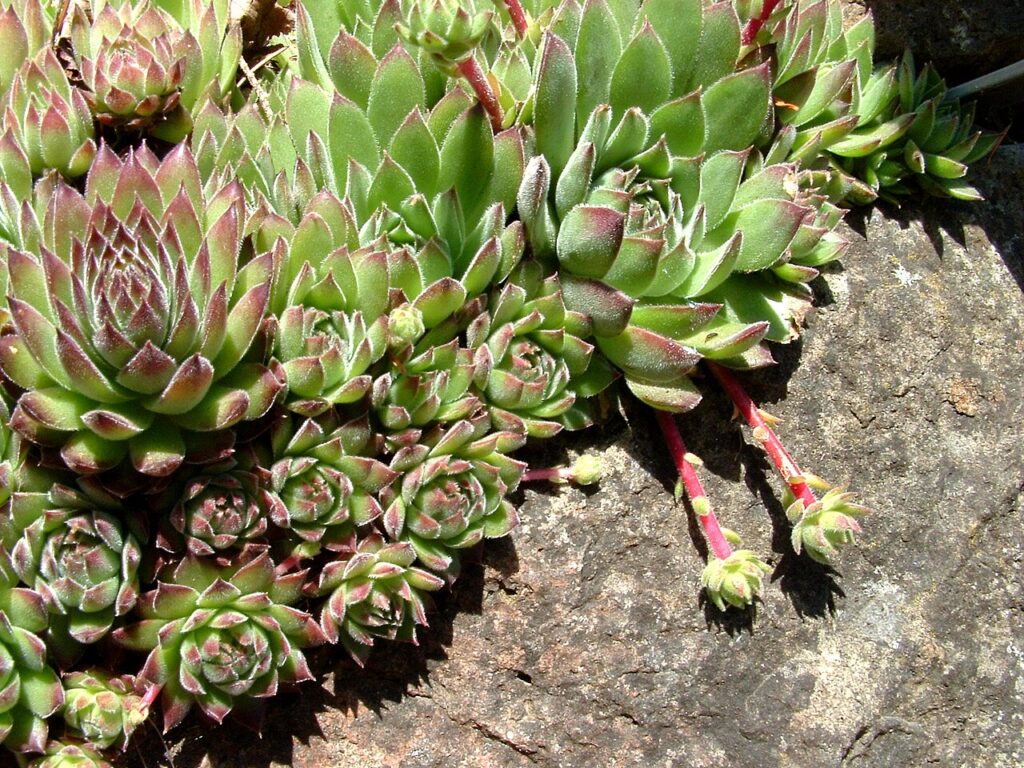
Sempervivum, commonly known as Hens and Chicks, is an incredibly hardy succulent that can handle both frost and freezing temperatures. It forms tight clusters of rosettes that range from green to red, offering a colorful display throughout the year. For the best results, plant it in a sunny spot with well-draining soil, as it thrives in bright conditions. Water it sparingly, as this plant is prone to rot in overly moist conditions. In areas with harsh winters, Sempervivum will survive the frost, but providing it with some shelter from heavy snow or ice is ideal.
The chicks (the smaller offshoots) grow around the main hen, which can be separated and replanted for easy propagation. These plants need minimal care, making them perfect for beginners. Sempervivum can be grown in both garden beds and containers, and its ability to withstand frost means it will keep its vibrant colors throughout winter. It does well in dry soil and can survive with little watering once established. Keep an eye out for overwatering and ensure the plant is getting enough sunlight to maintain its color.
Aeonium Zwartkop
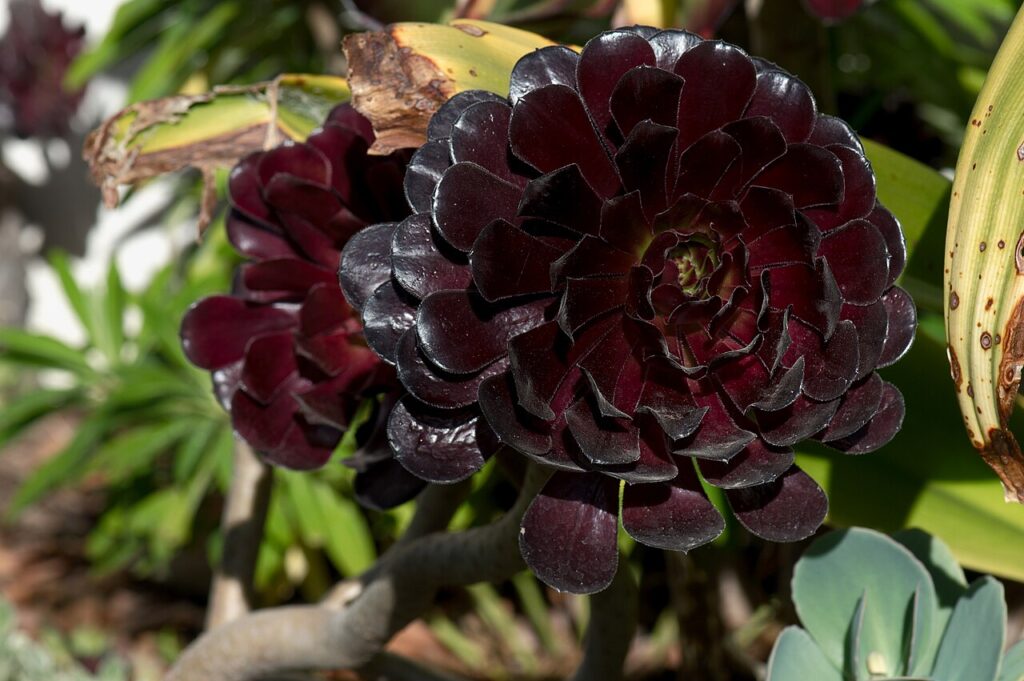
Aeonium Zwartkop, also known as Black Rose, is a striking succulent with deep purple to black rosettes that thrive even in cooler temperatures. Though this succulent prefers warmer climates, it can tolerate light frost and retains its dark, dramatic color throughout the colder months. To care for it, plant it in well-drained soil with good air circulation. Water it lightly during the growing season and less frequently in winter when it enters a dormant phase. For extra protection during frosty periods, consider moving it indoors or covering it with a frost cloth.
Aeonium Zwartkop needs at least four hours of direct sunlight a day to maintain its deep, rich color. It can be grown in containers or garden beds, making it versatile for different types of gardens. Be mindful not to overwater, as this succulent is particularly sensitive to excess moisture. Propagate it by cutting off a leaf or rosette and allowing it to callus before planting it in dry soil. This eye-catching plant will keep its beauty intact through the cold months with the right care.
Kalanchoe thyrsiflora (Chandelier Plant)

Kalanchoe thyrsiflora, also known as the Chandelier Plant, is a stunning succulent with broad, pale green leaves that turn red or orange when exposed to cold temperatures. This plant is not only frost-tolerant but also grows in a way that makes it perfect for gardens with colder climates. To care for it, plant it in well-draining soil and place it in a sunny spot where it can receive plenty of light. Water it sparingly, allowing the soil to dry out completely between watering. If you live in an area prone to heavy frost, you can bring it indoors or protect it with a covering.
This plant’s unique leaf structure and color changes in colder weather make it stand out in any garden. It is relatively easy to grow and requires minimal care, which is a plus for busy gardeners. Kalanchoe thyrsiflora can be propagated by separating the leaves and planting them in dry soil. Over time, it can form a beautiful cluster of rosettes. For a succulent that adds vibrant color and handles frost with ease, this plant is a top choice.
Crassula Perfoliata (Propeller Plant)
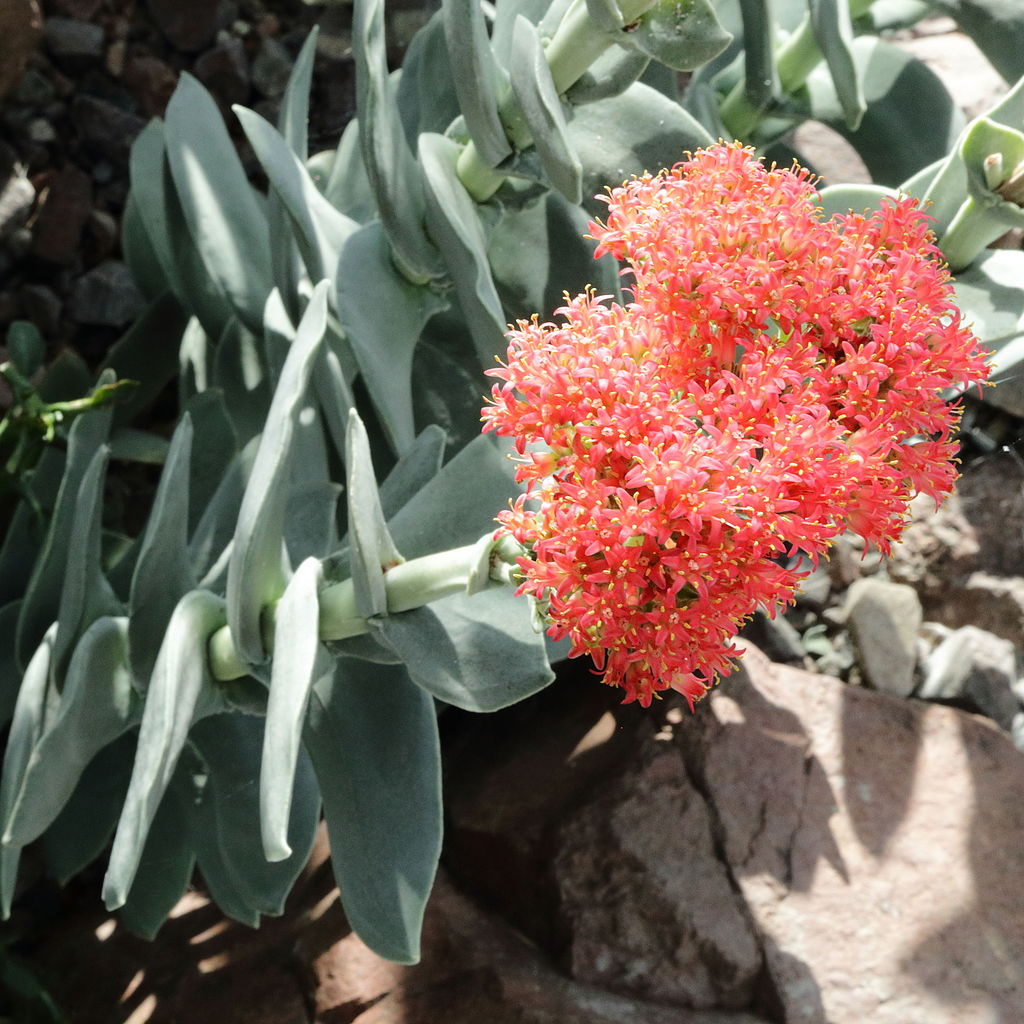
Crassula Perfoliata, or the Propeller Plant, features striking, fan-shaped leaves that range from green to red, making it a great addition to any garden in cold weather. It can tolerate light frost without losing its vibrant hues, retaining its bold colors even during the colder months. To care for this succulent, ensure it is planted in a sunny spot with well-draining soil. Water it thoroughly, but allow the soil to dry out before watering again, as it is susceptible to root rot. If you’re in an area with harsh winters, covering the plant with a frost cloth will help protect it.
The Propeller Plant’s distinctive appearance makes it a standout, and its frost tolerance allows it to thrive in places other succulents cannot. Its compact size makes it ideal for both garden beds and containers. With minimal care and the right growing conditions, it will continue to provide interest and color throughout the year. Propagate it by taking leaf cuttings and allowing them to callus before planting. This low-maintenance succulent is perfect for those looking to add color to their garden without much effort.
Agave Blue Glow
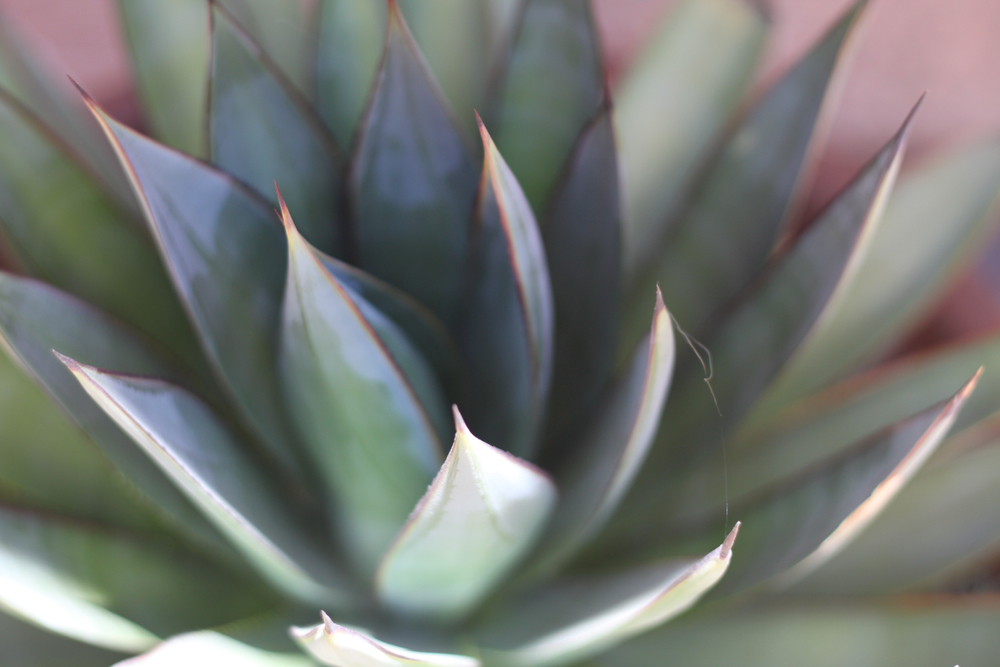
Agave Blue Glow is a striking succulent known for its blue-grey leaves and red edges, which become more pronounced in cooler temperatures. This plant can handle frost and will retain its colorful appearance even when temperatures drop. Plant it in a location that receives full sunlight and well-draining soil to help it maintain its vibrant hues. Water it sparingly, as overwatering can lead to root rot, especially in the winter. If you live in an area with heavy frost, it’s a good idea to bring the plant indoors or cover it to protect it from the cold.
Agave Blue Glow is a low-maintenance plant that thrives in dry conditions, making it perfect for gardeners with busy schedules. Its bold appearance and unique coloration make it an attractive focal point in any garden. While it can handle light frost, prolonged exposure to freezing temperatures can damage the plant, so protection is essential. This agave species is slow-growing, but with patience, it will eventually form a beautiful, spiky rosette. If you’re looking for a succulent that offers stunning color through the winter, this one is a great option.
Crassula Springtime
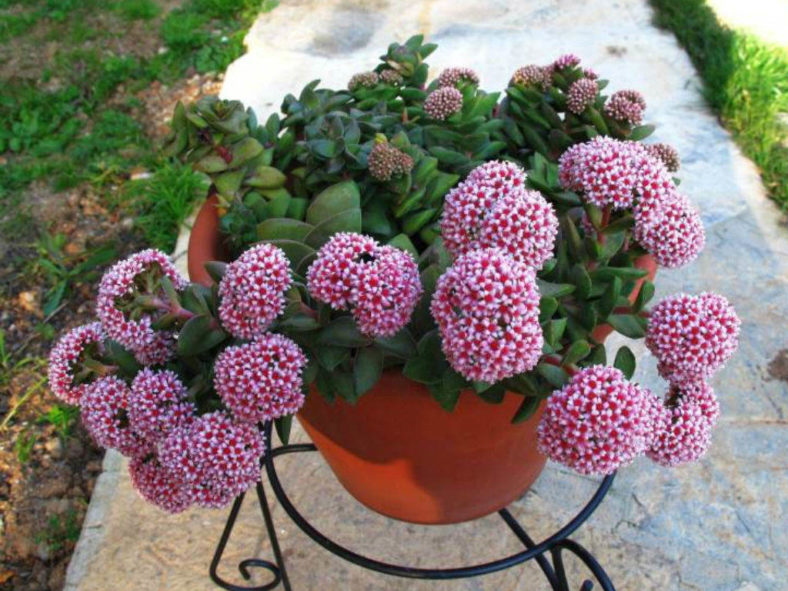
Crassula Springtime is a beautiful succulent known for its clusters of green, red, and yellow leaves that turn even brighter with the cold. This plant is perfect for areas with chilly winters, as it can handle frost without losing its vibrant colors. Plant it in well-draining soil and ensure it gets plenty of sunlight for the best color. Water it sparingly to avoid excess moisture around the roots, which can lead to rot. If you’re growing it outdoors, consider moving it indoors during harsh frosts to preserve its health.
Crassula Springtime is a small succulent that can be used in containers or as a ground cover, and its colorful leaves add brightness to any garden in the winter. It’s easy to propagate by separating its offshoots and allowing them to root in dry soil. Though it can handle light frost, it’s still important to provide some protection if you live in an area with extremely cold temperatures. This plant’s resilience and beauty make it a fantastic addition to any succulent collection. It thrives with minimal care, making it a favorite among busy gardeners.
Aeonium Sunburst
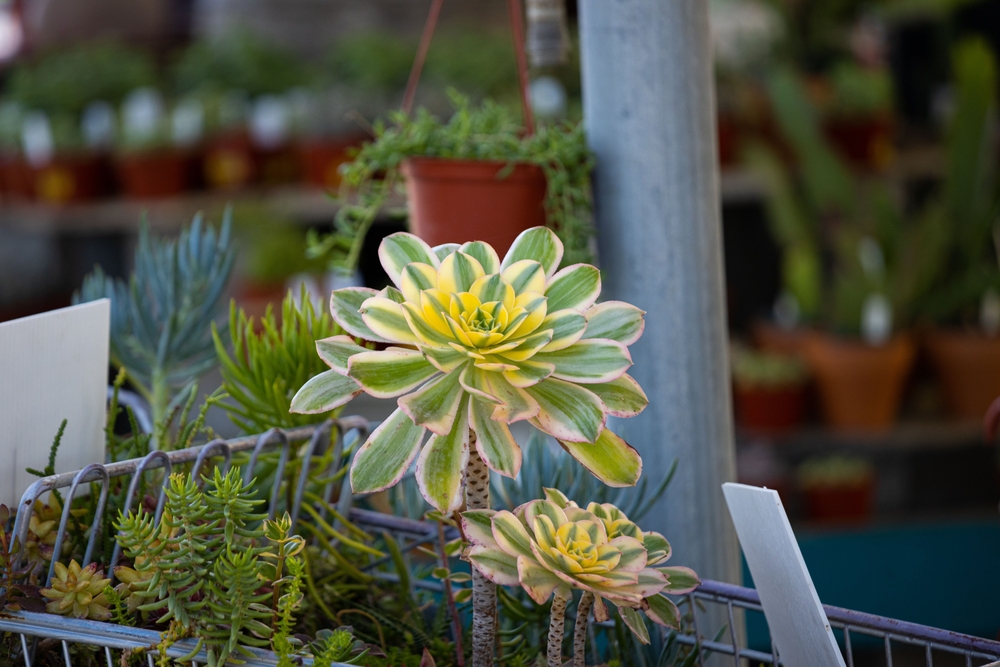
Aeonium Sunburst is a striking succulent with variegated green and yellow leaves that form a stunning rosette. It is hardy enough to tolerate light frost, maintaining its colorful foliage even in cold weather. To care for it, plant it in well-draining soil and place it in an area that receives plenty of sunlight. Water it only when the soil has dried out completely, as it’s susceptible to rot if overwatered. During harsh frosts, consider bringing it indoors or covering it with a protective cloth to ensure it thrives.
The variegated colors of Aeonium Sunburst make it an eye-catching addition to any garden, and its frost tolerance makes it a reliable choice for winter color. Though it’s not as cold-hardy as some other succulents, it can handle a light frost without fading. Propagate it easily by cutting off a rosette and allowing it to callus before planting it in dry soil. This plant is perfect for adding a pop of color during the colder months while remaining easy to care for. For gardeners looking for a low-maintenance, colorful succulent, this variety is an excellent option.
Sedum Angelina
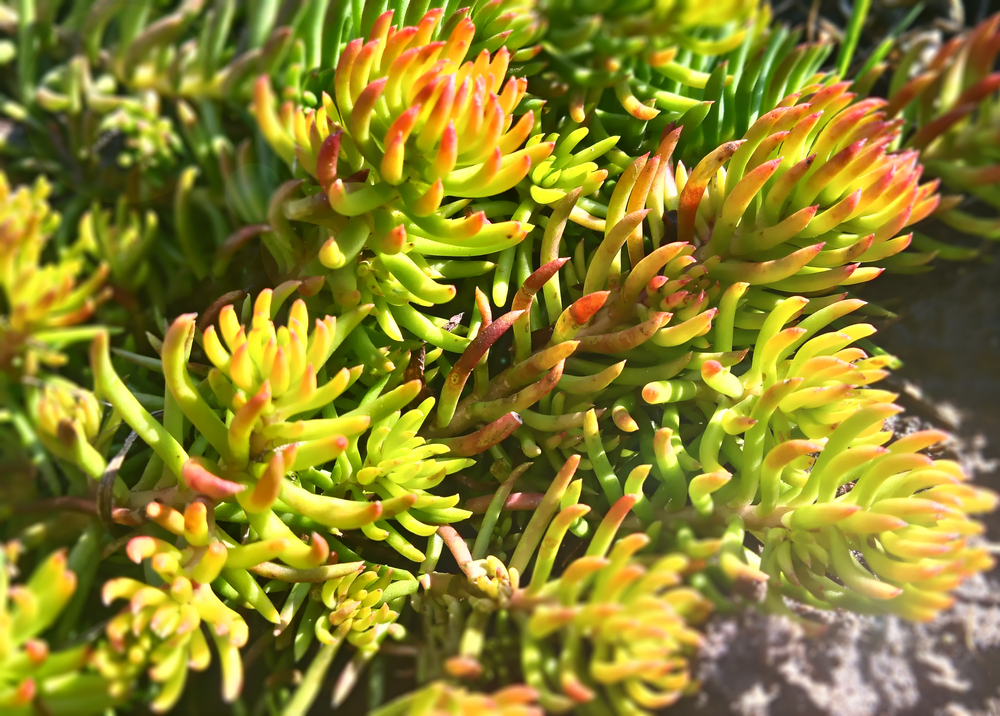
Sedum Angelina is a colorful, low-growing succulent known for its bright yellow and green foliage that turns orange-red in the colder months. It is incredibly frost-tolerant and retains its vivid colors even in freezing temperatures. Plant it in well-drained soil, and place it in full sunlight to keep its colors bright and vibrant. Water it moderately during the growing season, but reduce watering in winter to prevent rot. In regions with harsh winters, it may benefit from some protection during extreme frost, but it can generally handle the cold.
This fast-growing ground cover is ideal for creating a colorful carpet of succulents, especially in rock gardens or along walkways. It’s easy to propagate by cutting or dividing the plant, and it will quickly spread to fill empty spaces. Sedum Angelina’ thrives in dry conditions, which makes it a great choice for low-maintenance gardens. Its ability to maintain its bright color through the cold months adds a unique element to winter gardens. For gardeners looking for an easy-to-grow succulent with vibrant color, Sedum Angelina is an excellent option.
Sempervivum Red Rubin
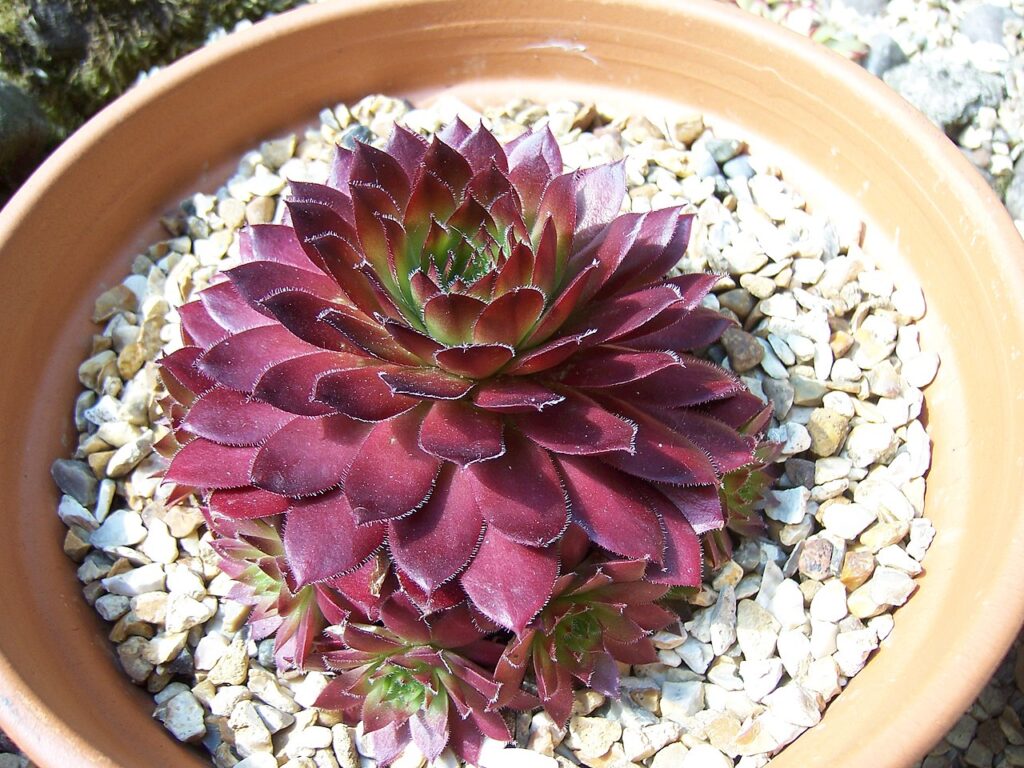
Sempervivum Red Rubin, also known as Hens and Chicks, is a striking succulent with red to purple rosettes that stand out in any garden. It is highly frost-tolerant and can withstand cold temperatures without fading its rich colors. To care for this succulent, plant it in well-draining soil and provide it with full sunlight for the best results. Water it sparingly, as Sempervivum is highly drought-tolerant and can rot if exposed to too much moisture. For extra protection during harsh winters, consider covering the plant with a frost cloth or moving it into a sheltered area.
The plant’s unique colors are at their most vibrant in cooler temperatures, making it perfect for winter gardens. Sempervivum Red Rubin’ is easy to propagate, and its offshoots (the chicks) can be separated and replanted to grow new plants. It thrives in poor soil, making it perfect for low-maintenance gardens or areas that are difficult to plant in. Because it grows in a compact rosette form, it works well in containers or small garden spaces. This hardy succulent is a perfect choice for gardeners looking for both beauty and resilience.
This article originally appeared on Avocadu.
